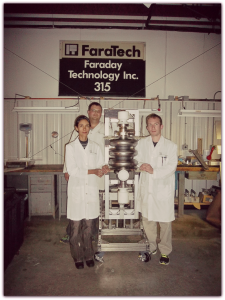In a response to a recent call for photos, Galina Strukova sent us some great shots of the microworld of palladium-nickle alloy.
You’re looking at pictures of real objects of the palladium-nickel alloy, the size of the samples ranging from tens of micrometers to 1-2 millimeters.
They are produced via self-organization of nano-sized (several nanometer in diameter) wires growing on porous membranes under the action of electric current pulses. The authors have managed to isolate and photograph them by means of a modern electron microscope. They have described this 3D sculptures in scientific journals.
Such antenna-like samples are expected to find application in nanotechnology. Now we can produce such “sculptures” from various metals “by order,” examine them and admire their elegant forms.
However, it is still a riddle. Why does it so closely resemble plants and seashells? Does this mysterious self-organization have anything in common with formation of plant leaves, fungi, and seashells?
Read Strukova and Strukov’s previous installment, “The Beauty and Mystery of the Microworld.”
PS: Do you have interesting science photos you’d like us to share on the ECS Redcast Blog? Send your pictures and a short write-up to rob.gerth@electrochem.org. We’re always looking for great guest posts!


![[Click to enlarge]](https://www.electrochem.org/wp-content/uploads/2015/10/PdNi_Fig10-300x264.jpg)

![[Click to enlarge]](https://www.electrochem.org/wp-content/uploads/2015/09/Shu-ShengLi_Stable-high-index-Ni-YSZ-300x293.png)
![[Click to enlarge]](https://www.electrochem.org/wp-content/uploads/2015/09/post-pic-224x300.png)
![[Click to enlarge]](https://www.electrochem.org/wp-content/uploads/2015/09/post-pic-2-224x300.png)